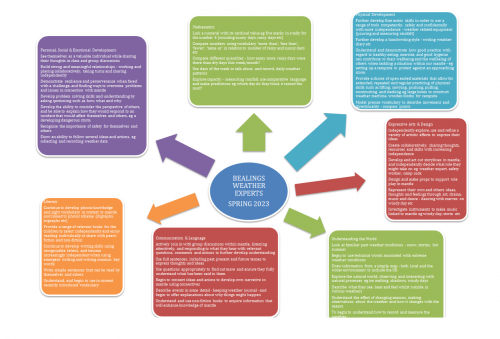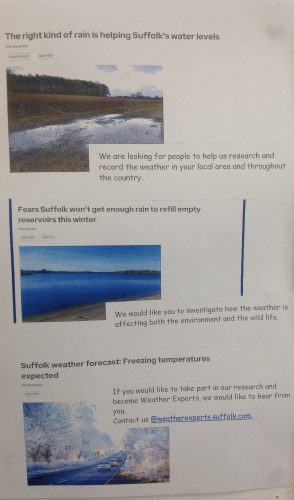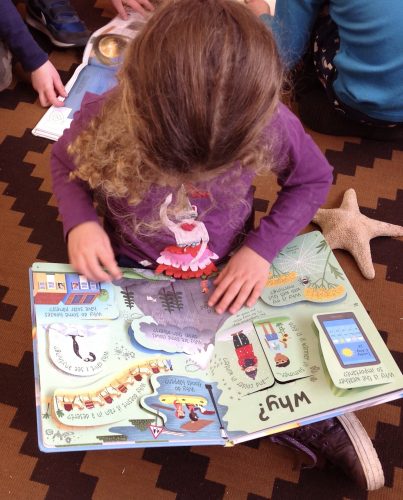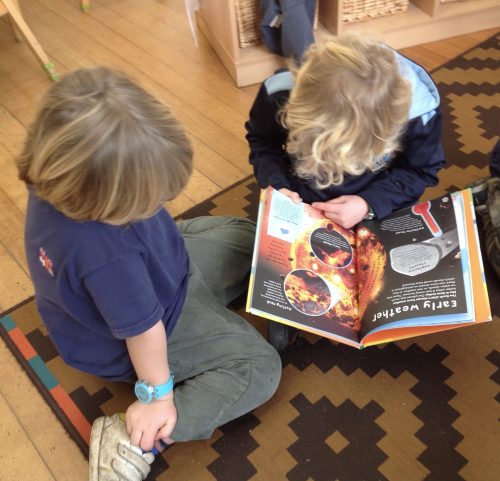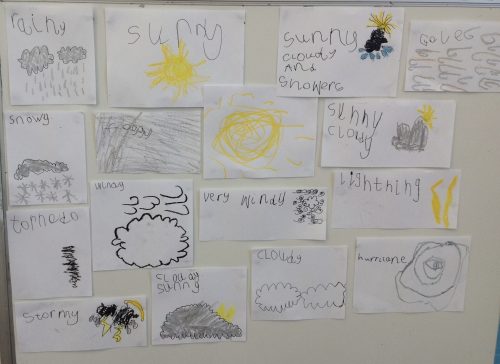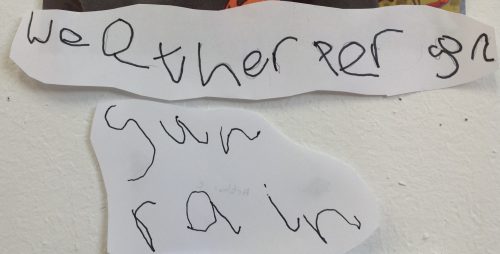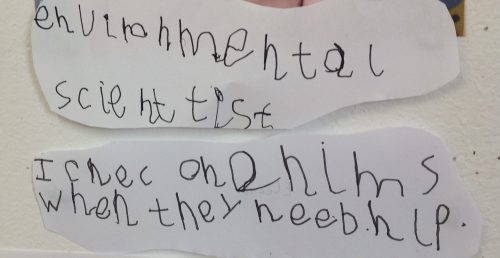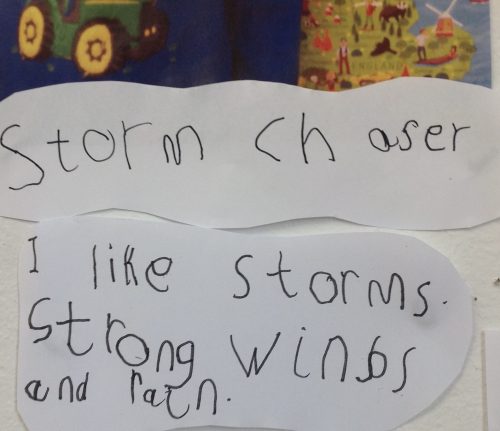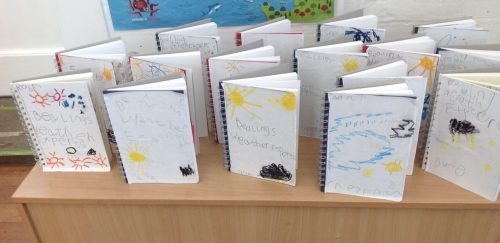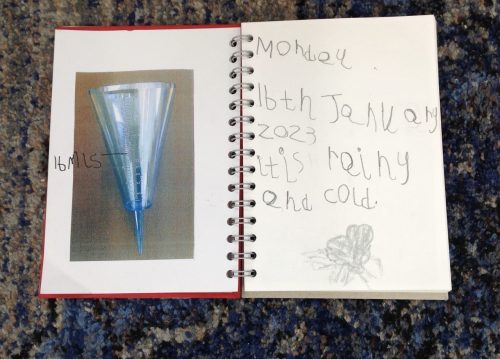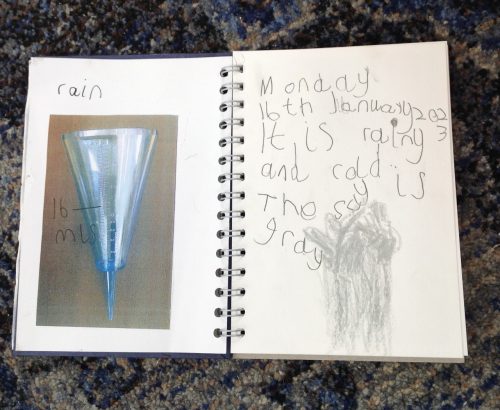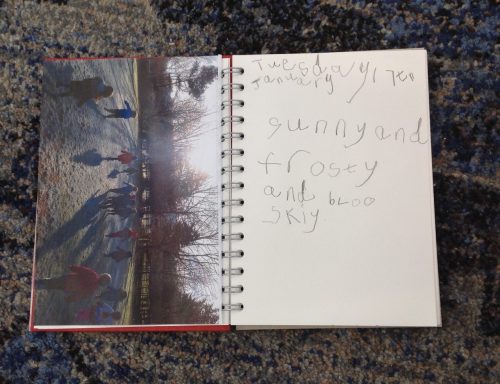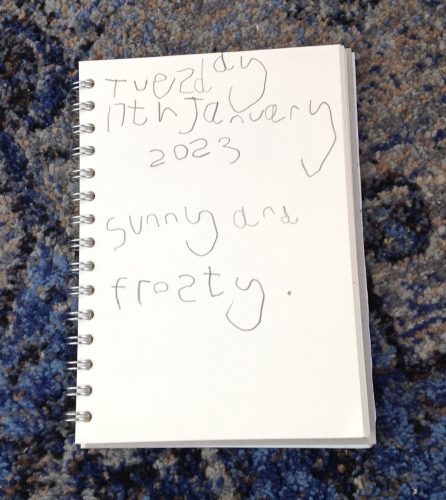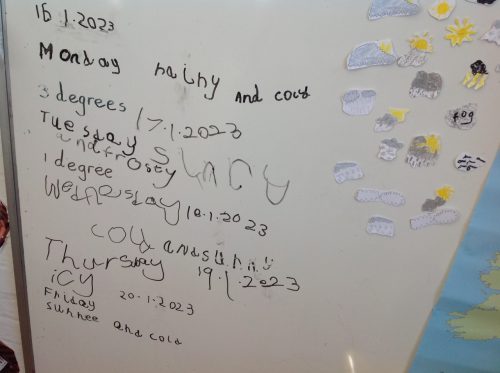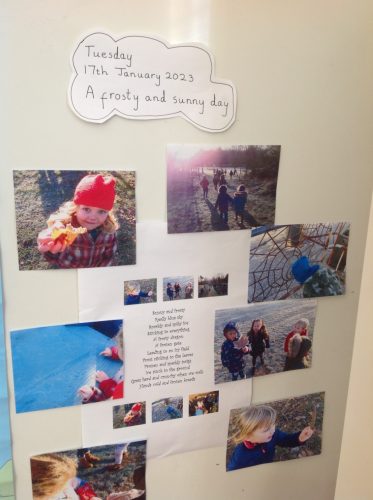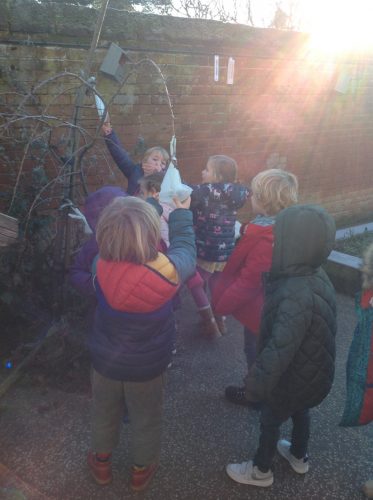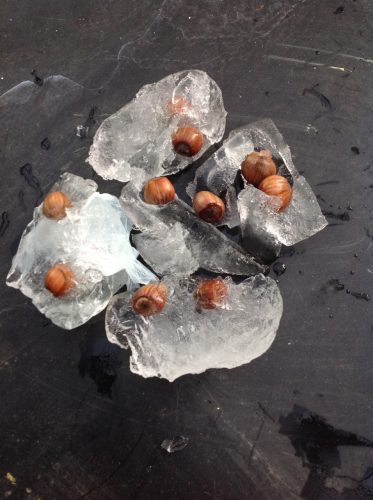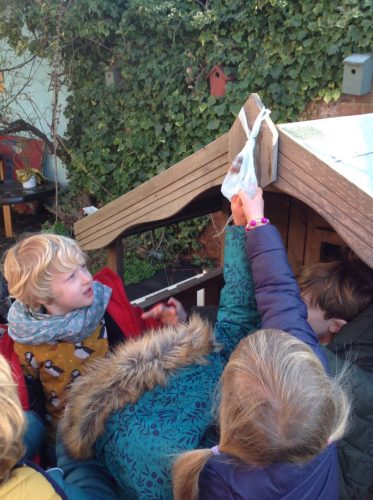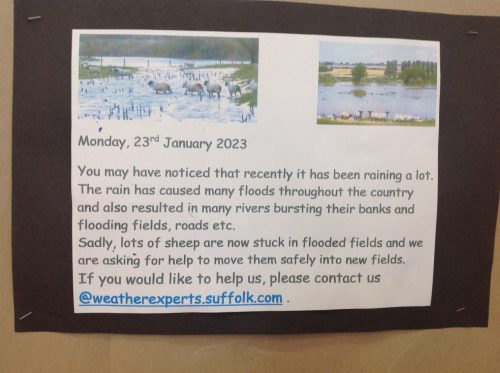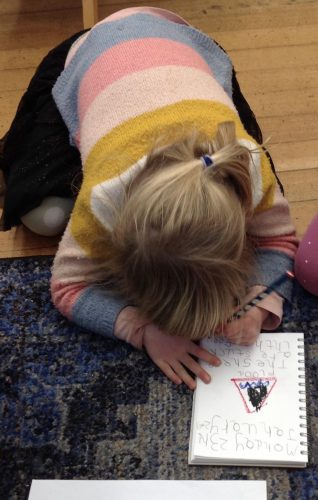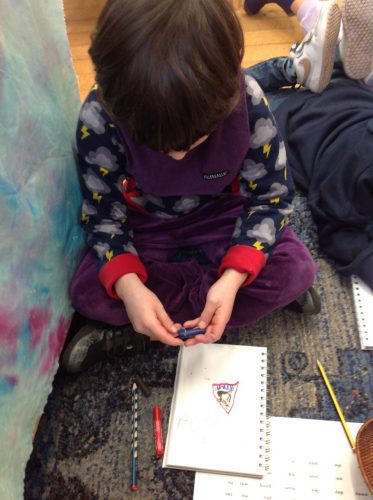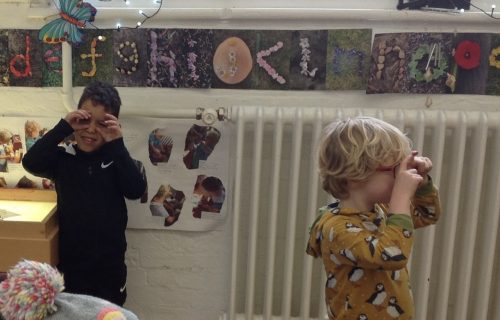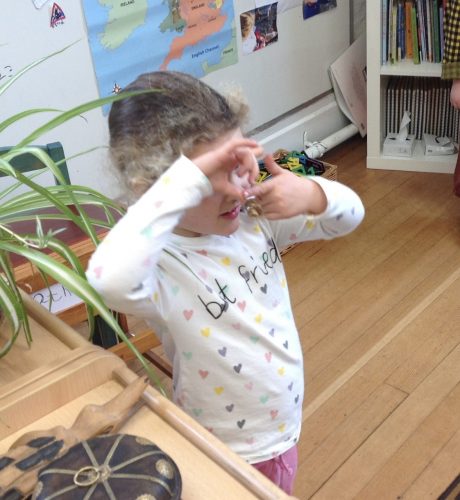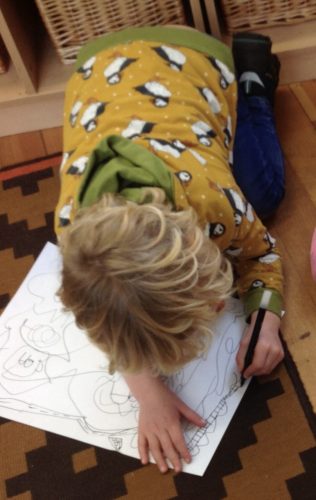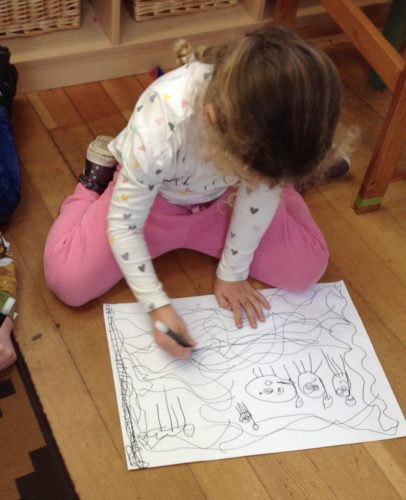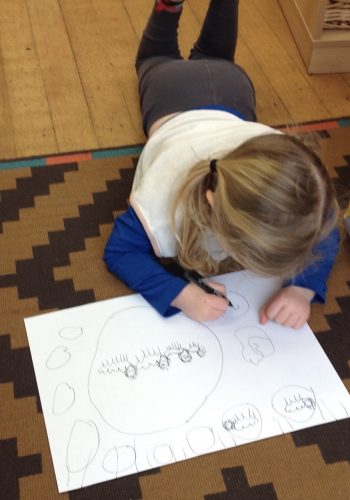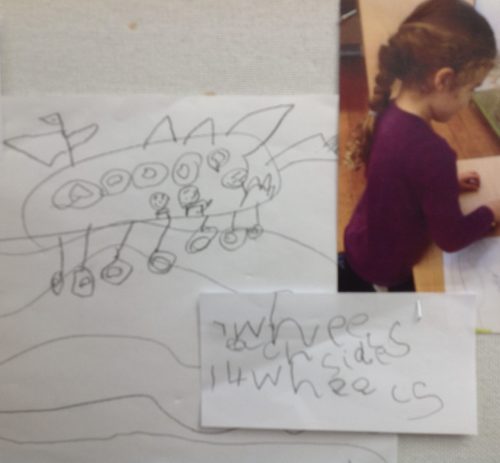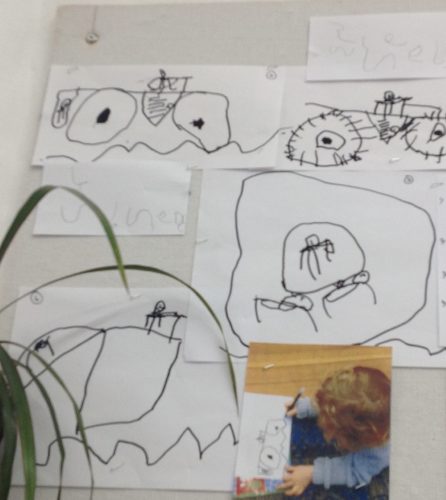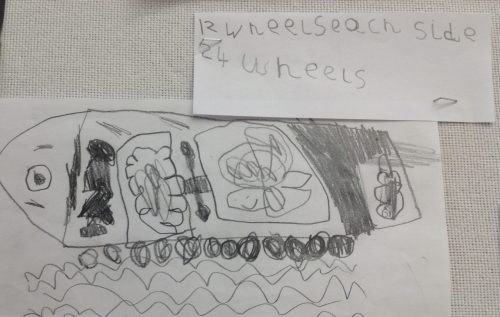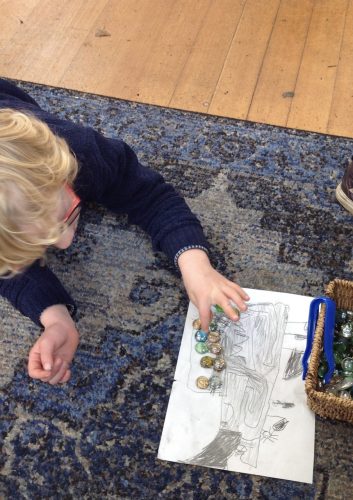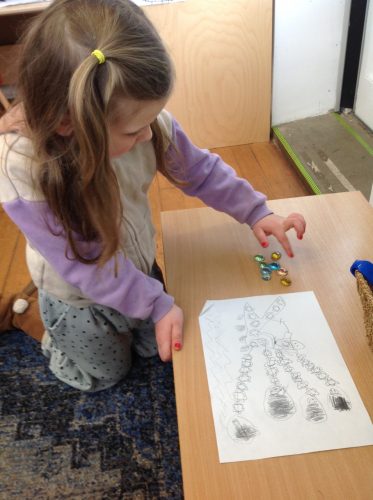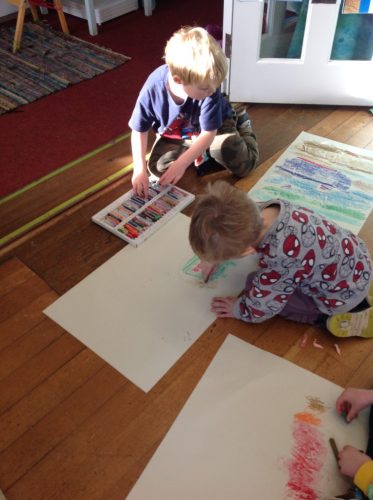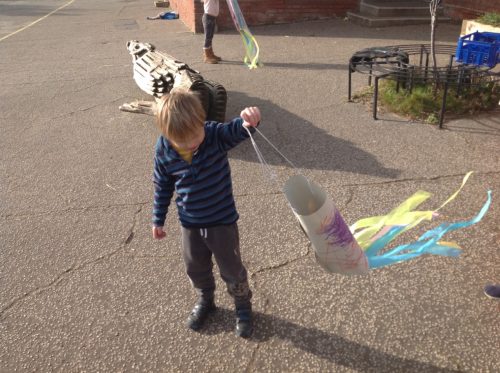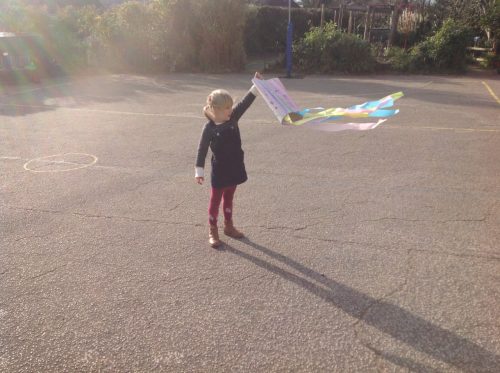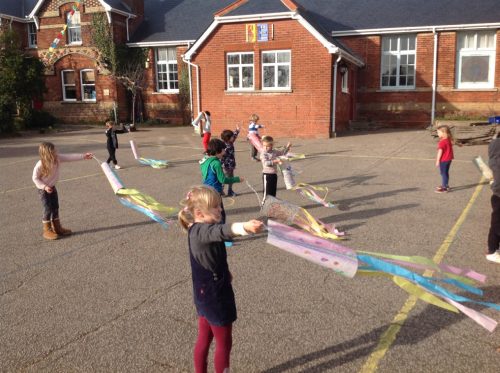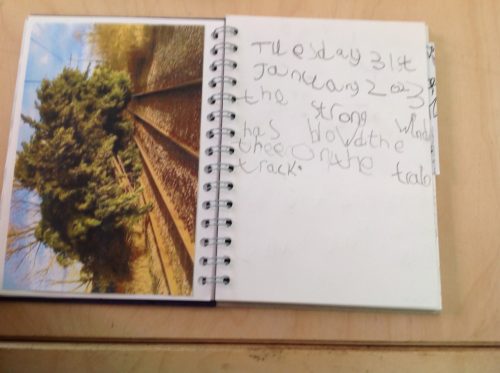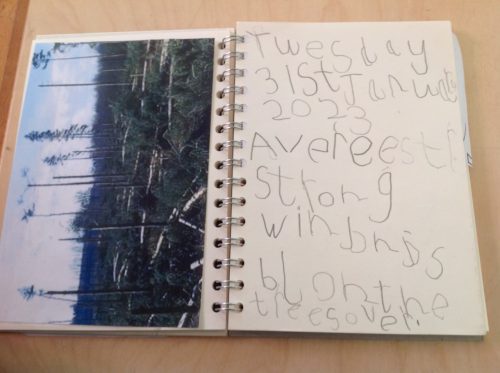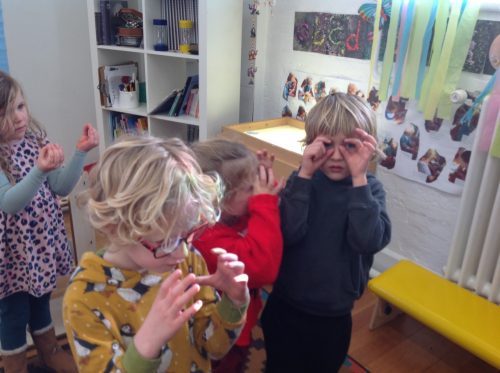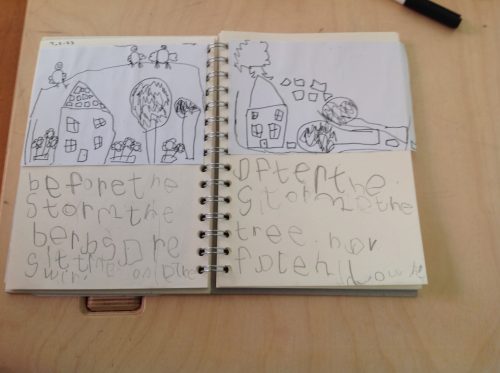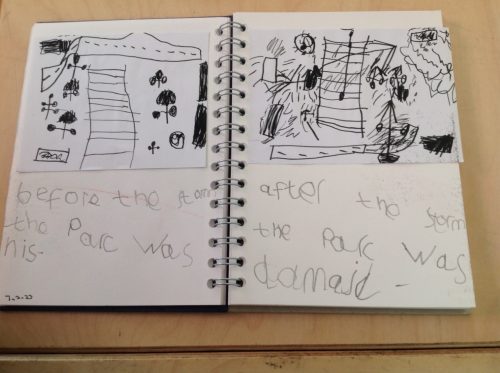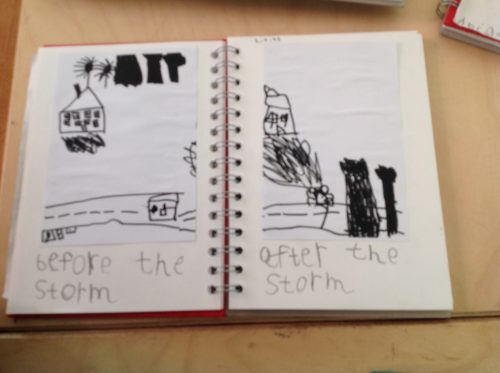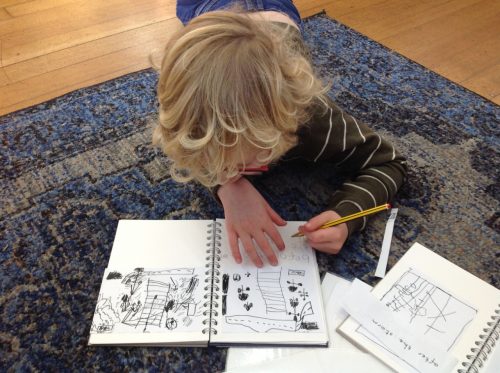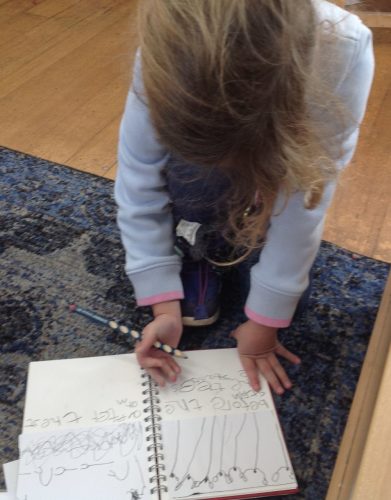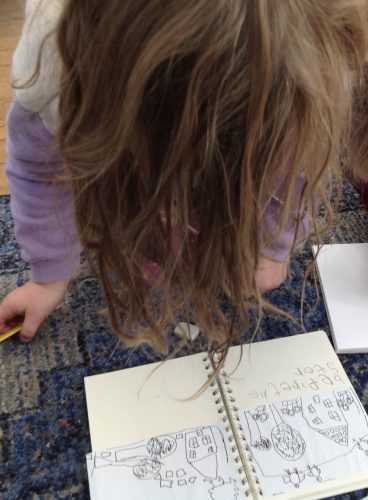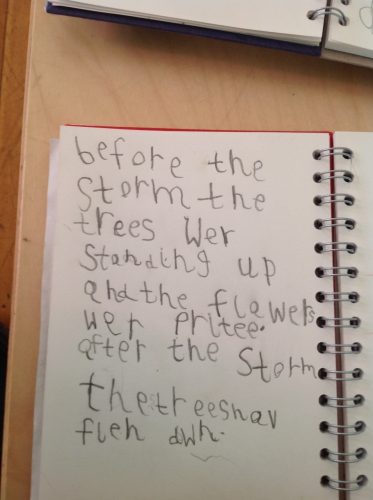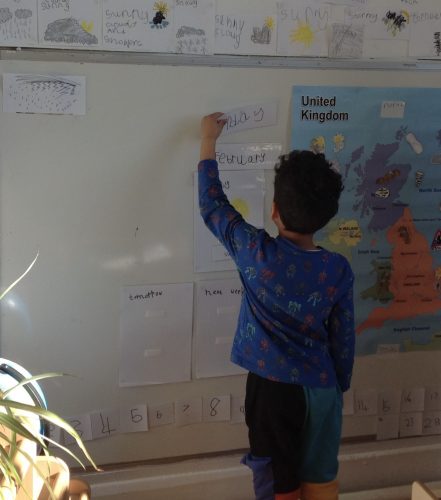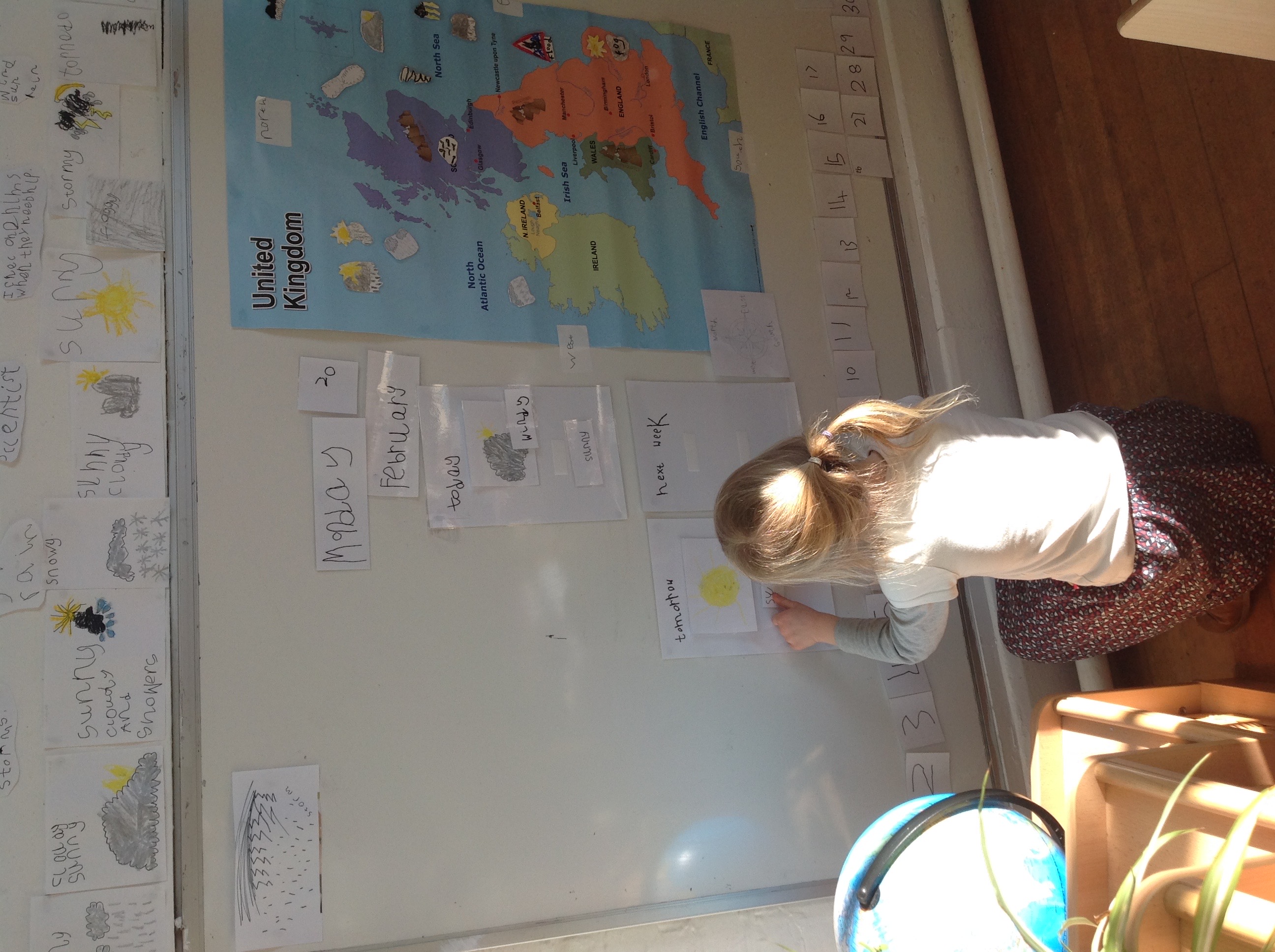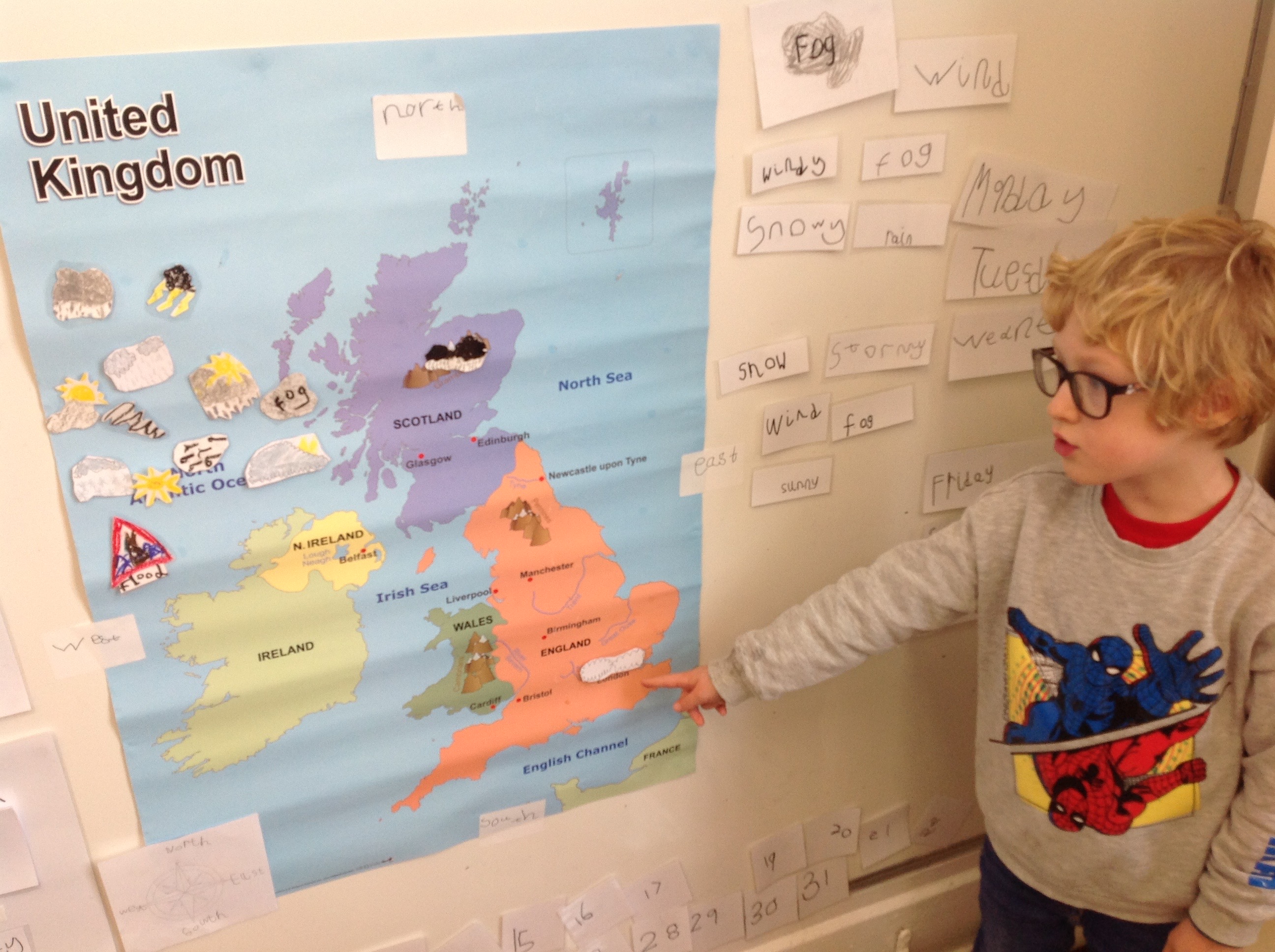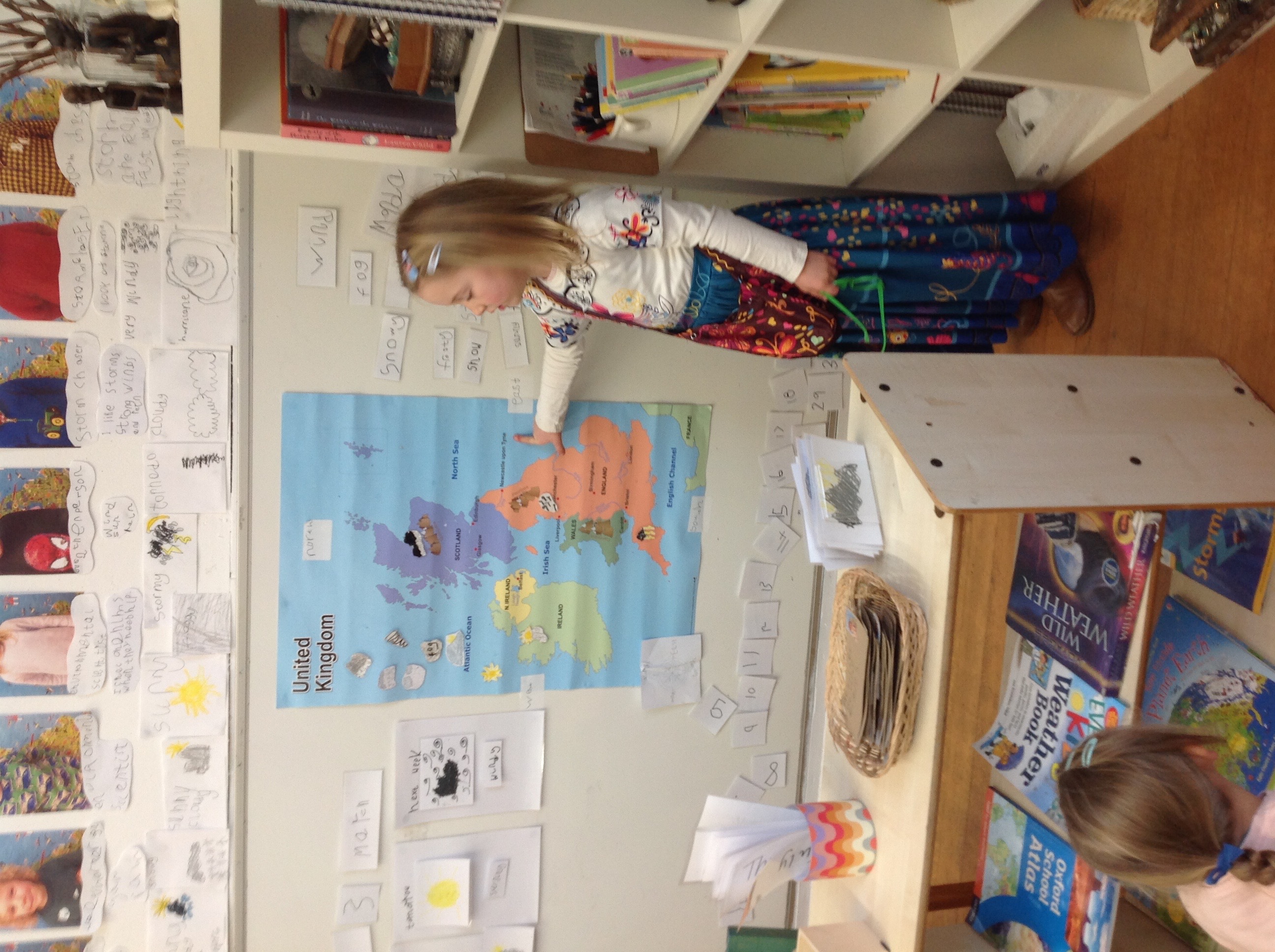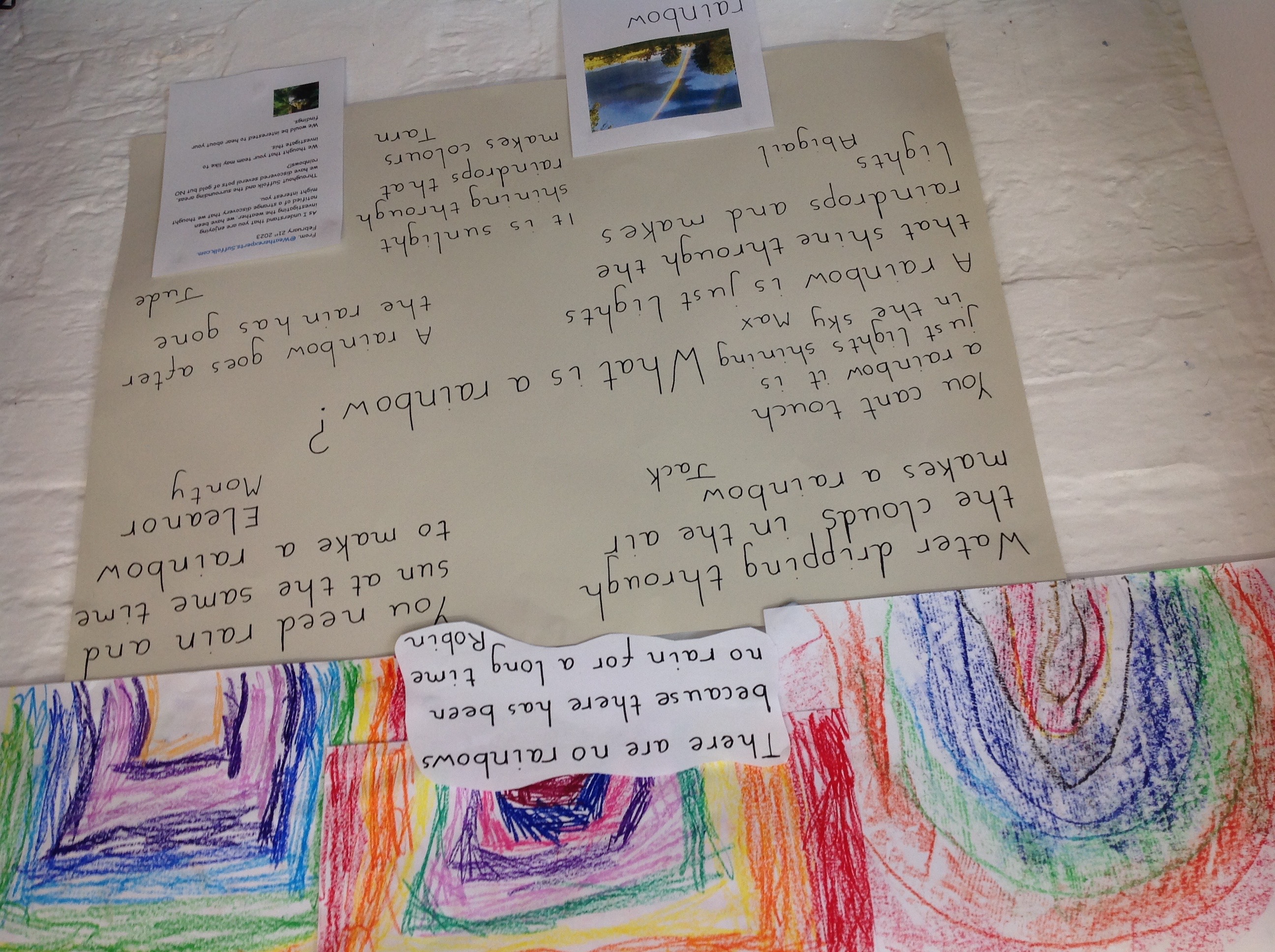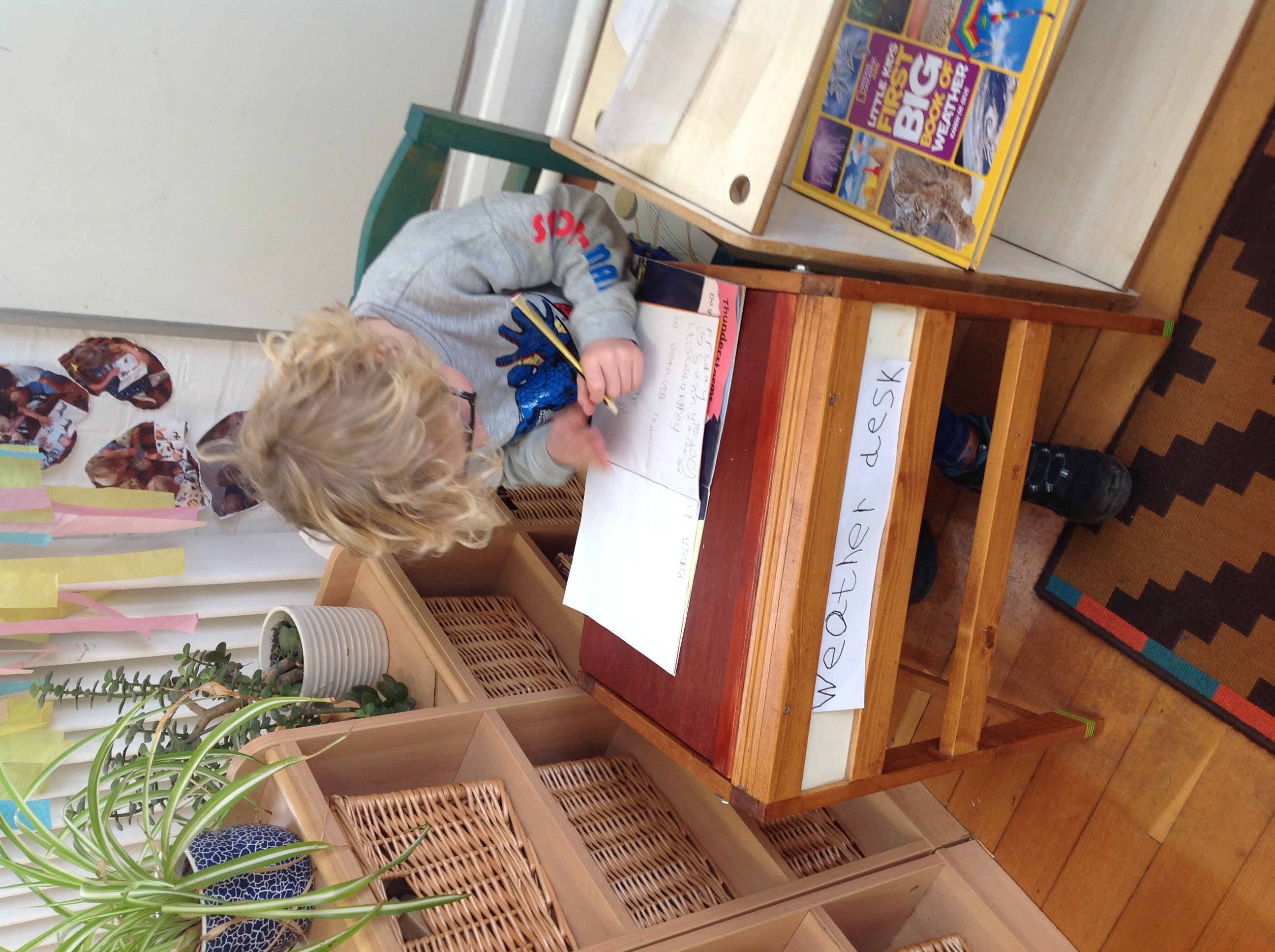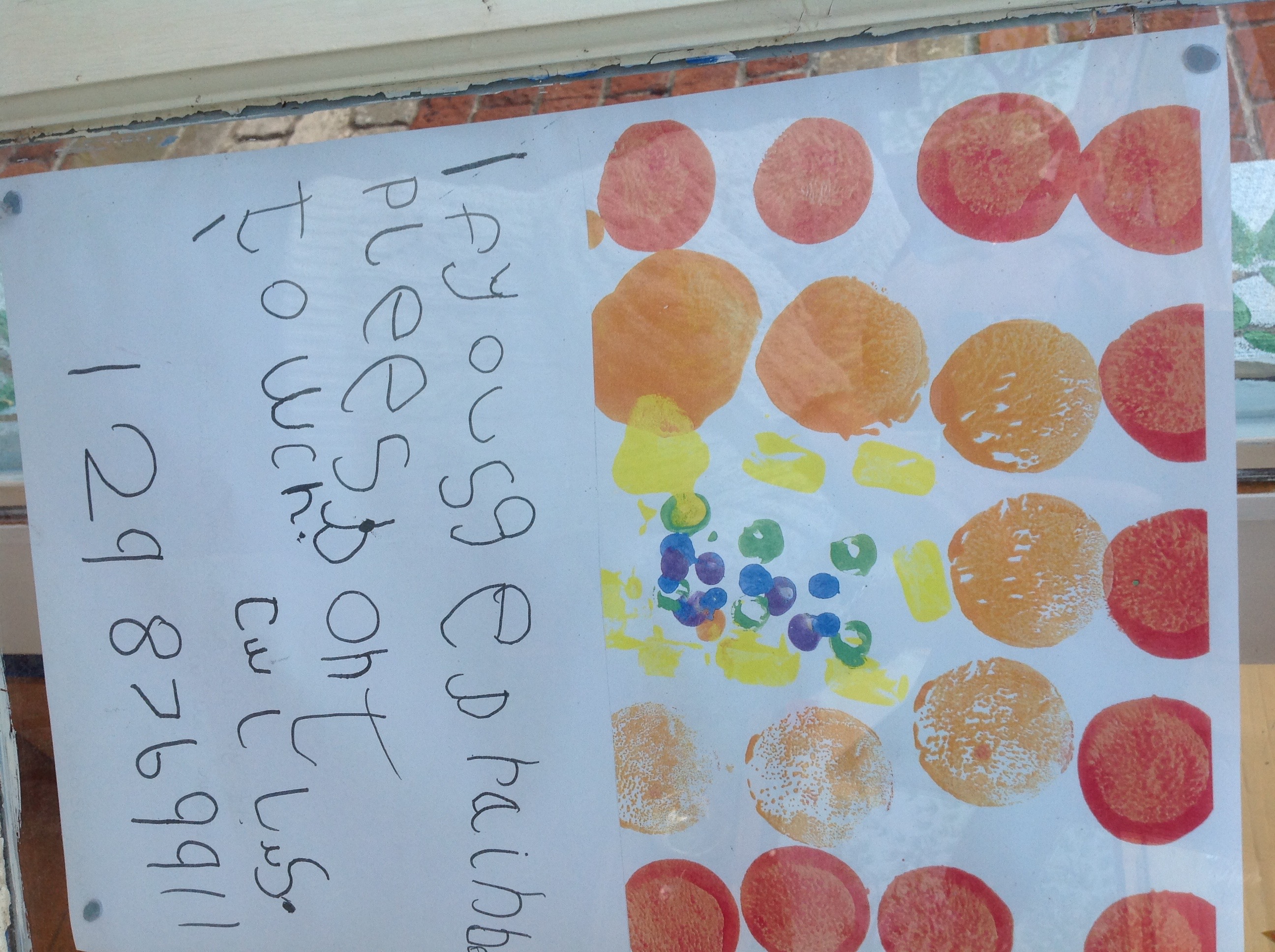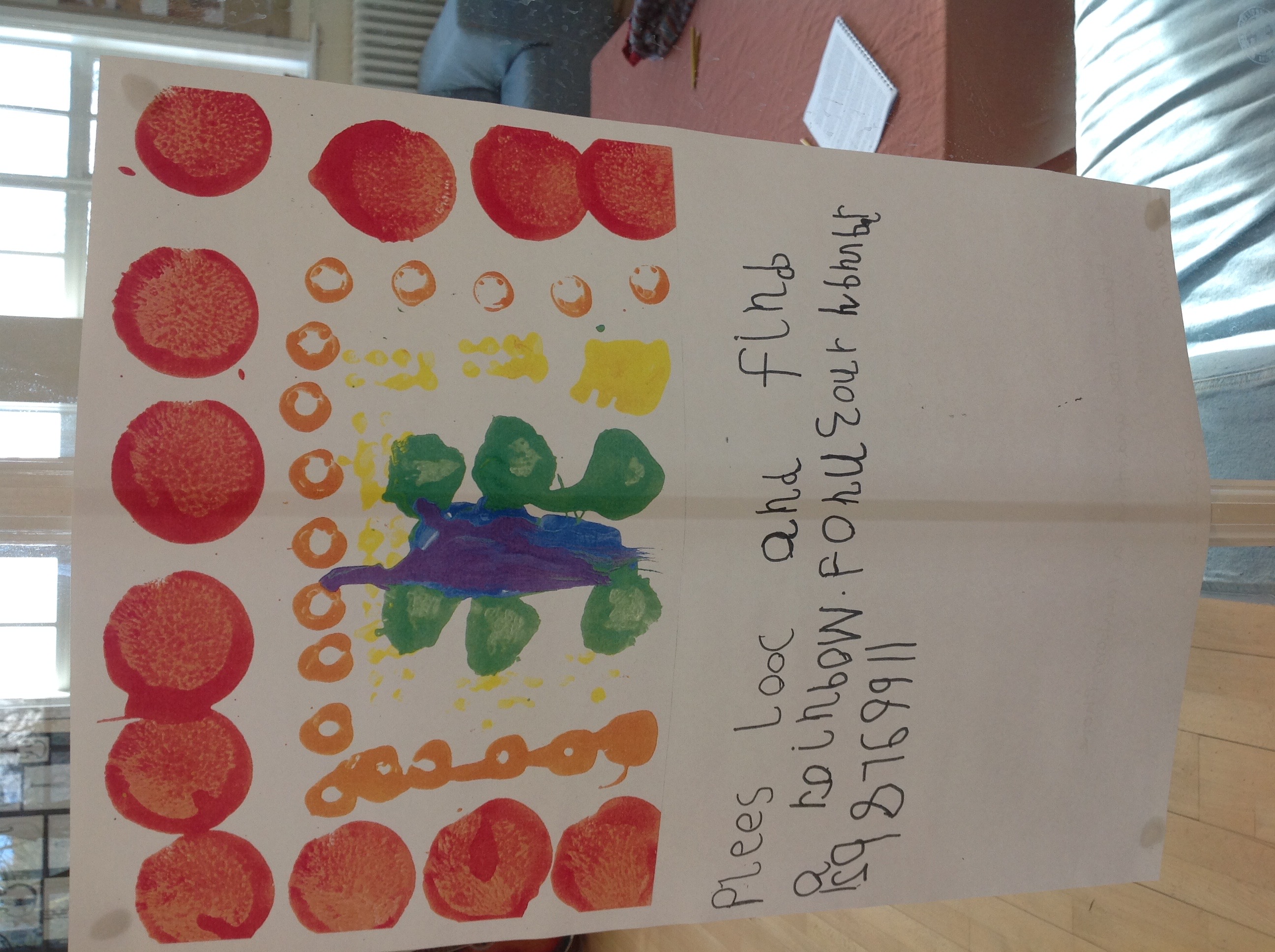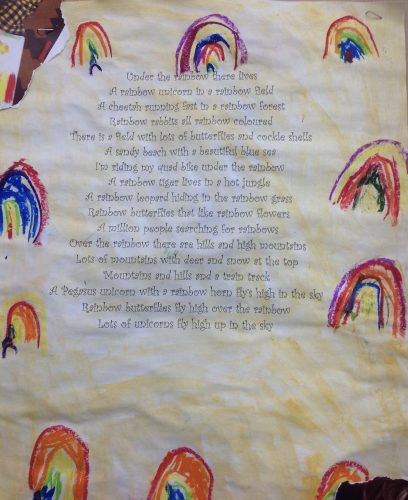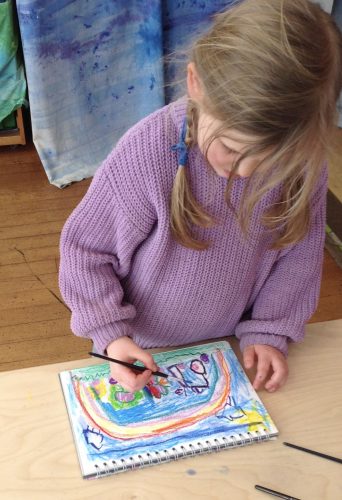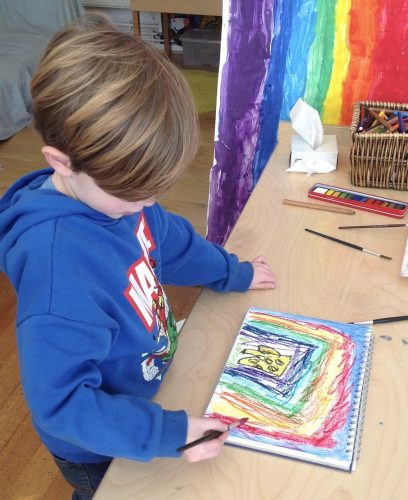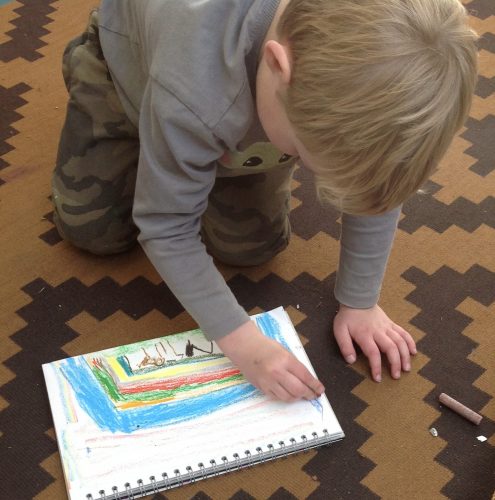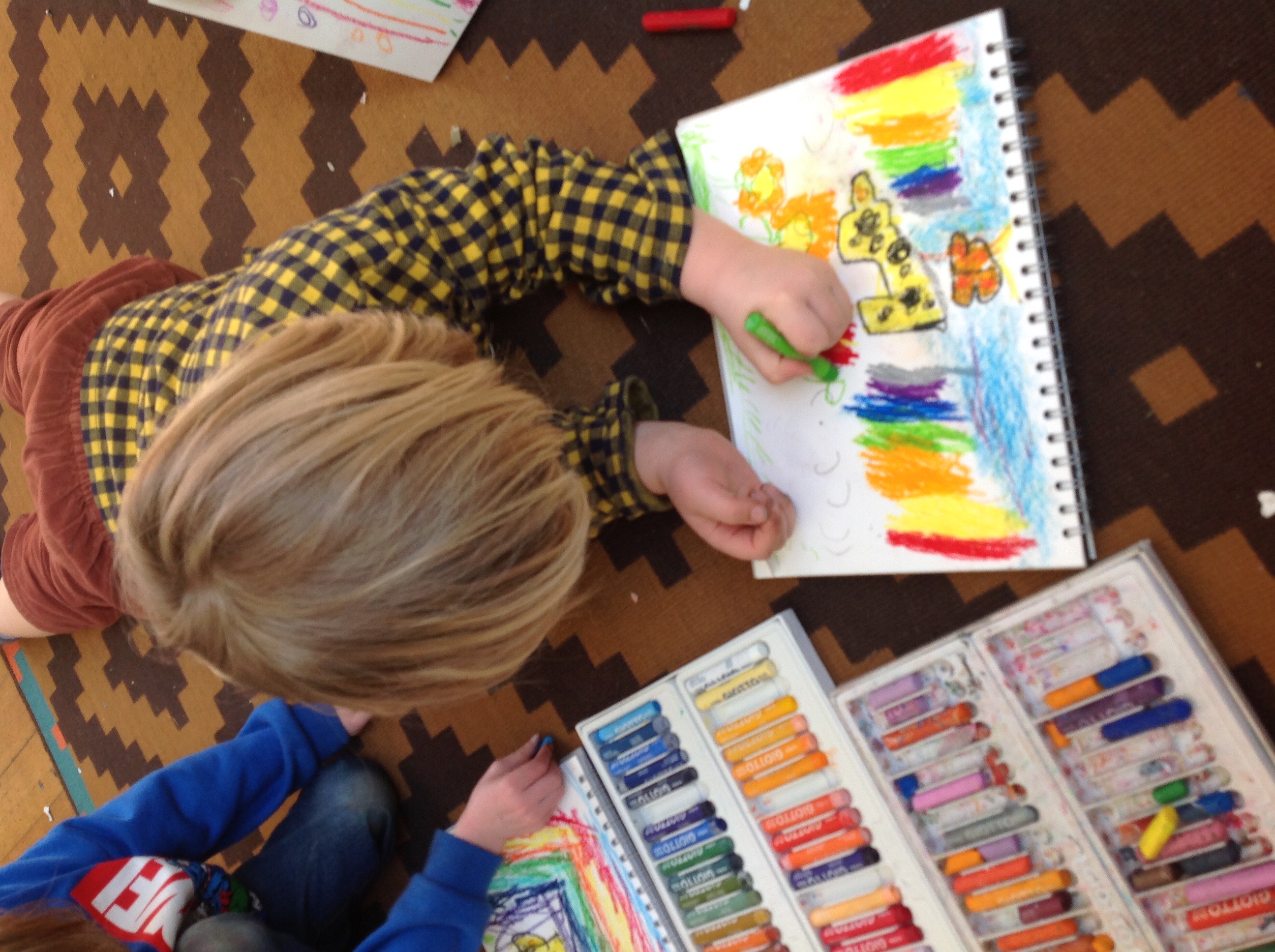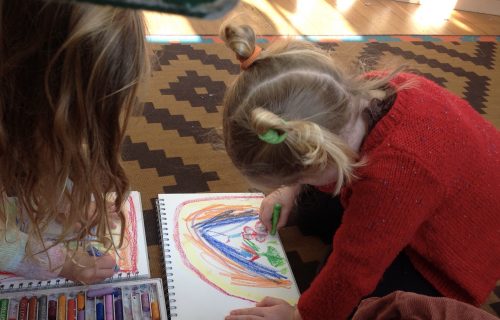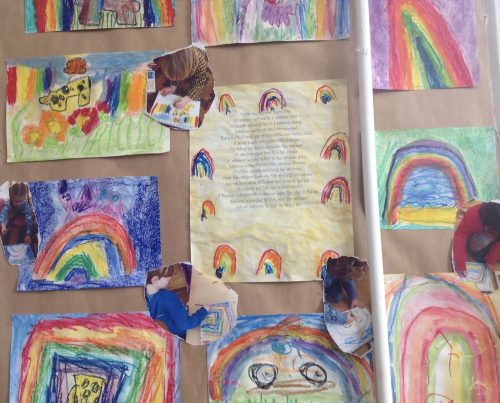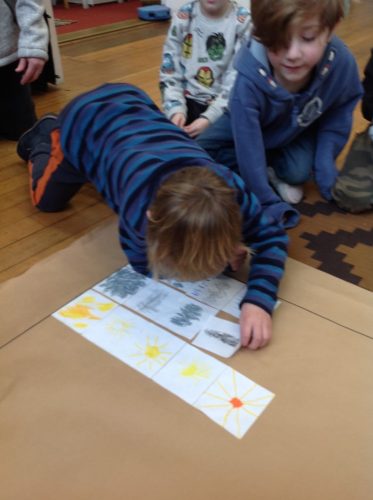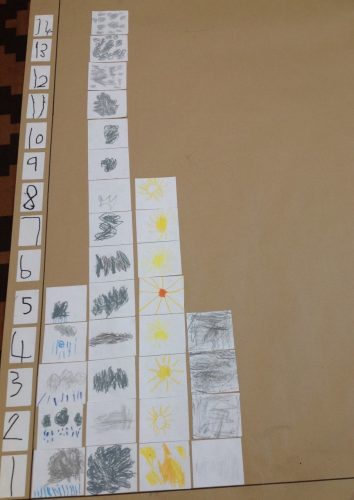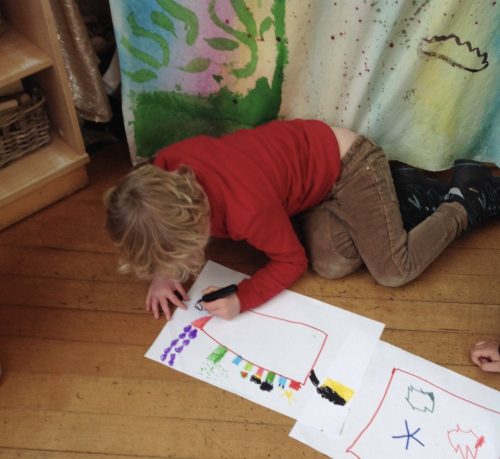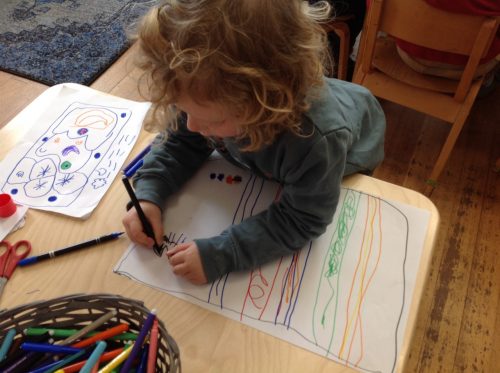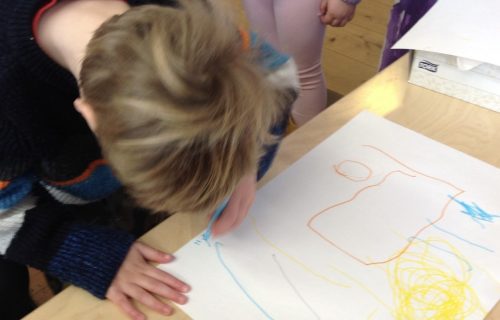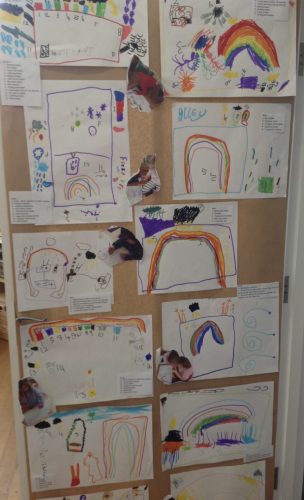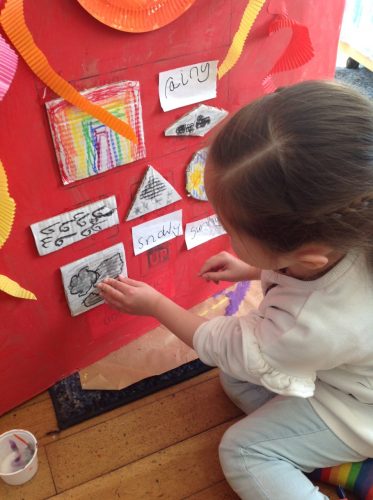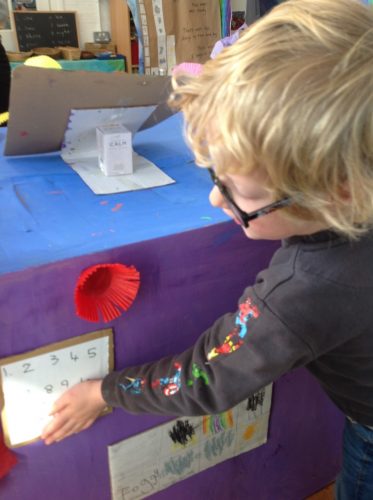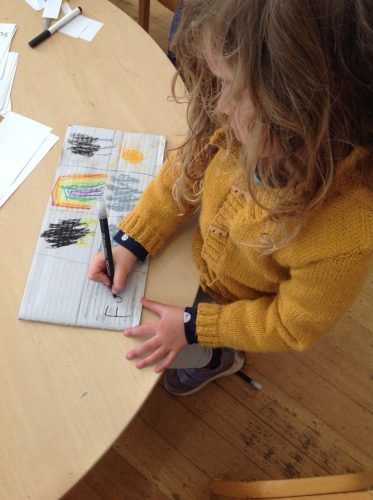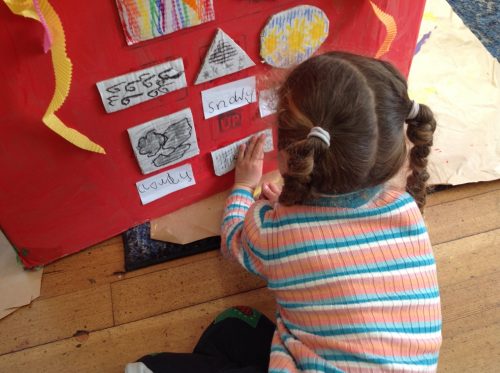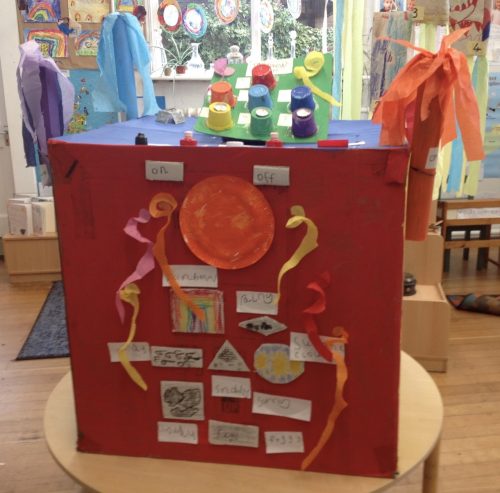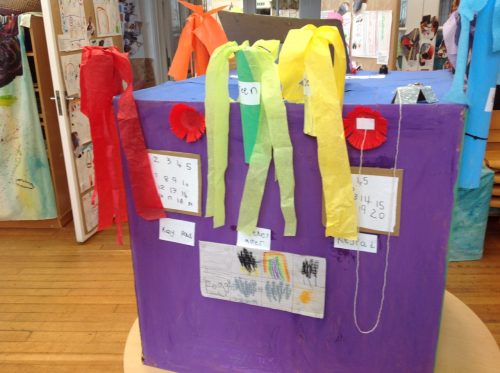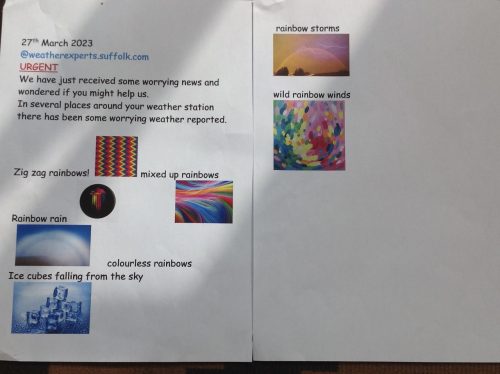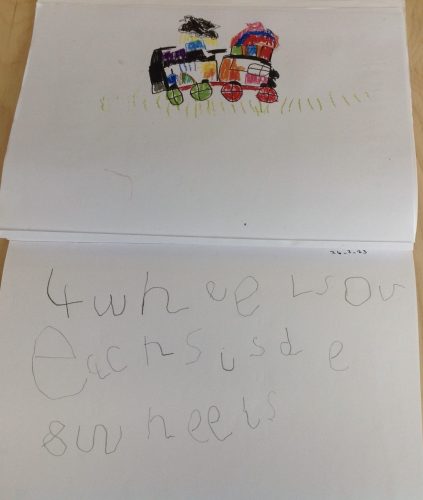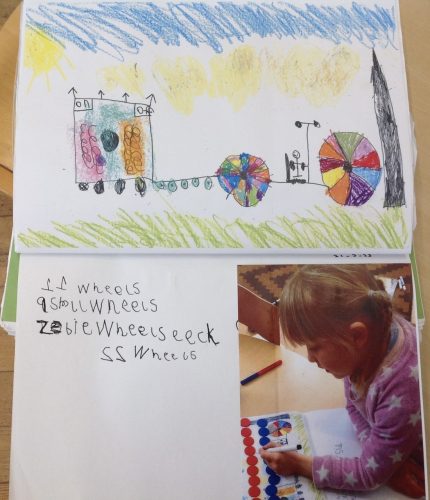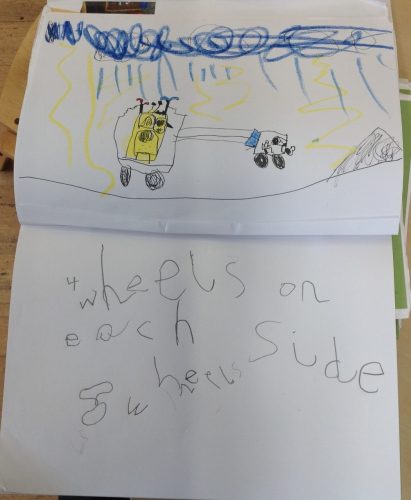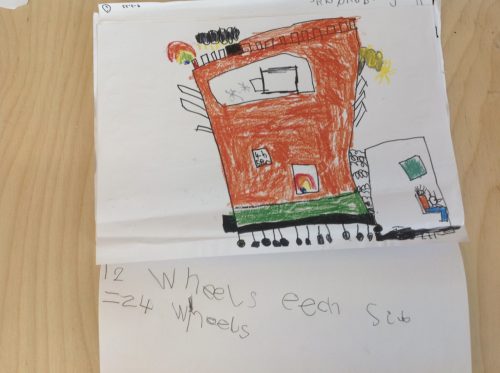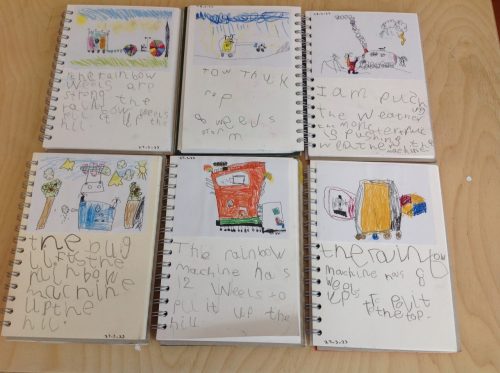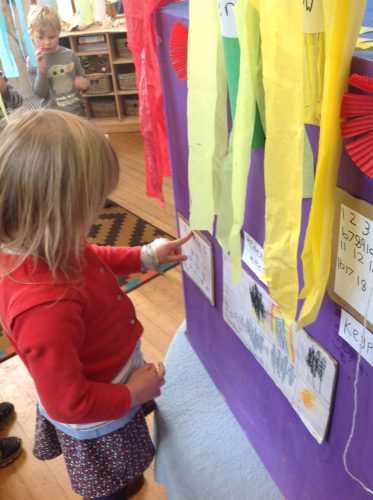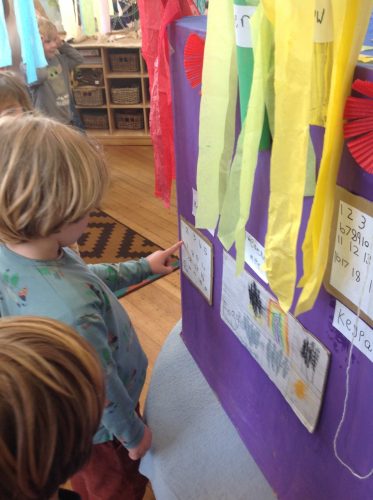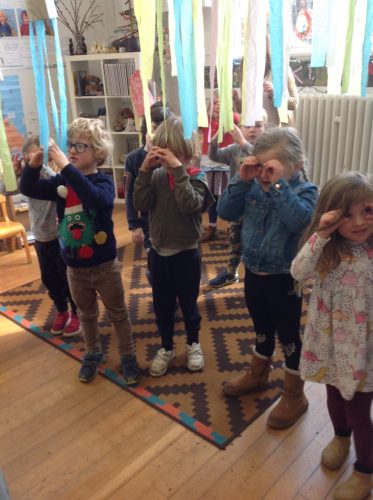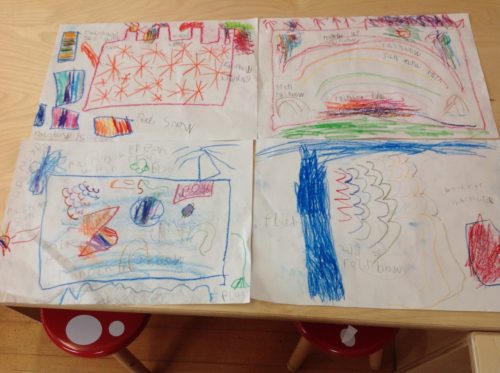Weeks 1 & 2
At the start of the week, we received an article
The article was all about weather conditions and was asking for weather experts to take part in a research project. An initial discussion showed us the children’s current understanding of types of weather:
“The weather is a kind of feeling from the sky”
“It can change every day”
“Weather can change during the day or night”
“Pressure moves the air and makes the weather change”
“Sometimes it can be cold and sunny, and sometimes hot and sunny”
“It can be sunny then rain”
“If it rains and is sunny you might see a rainbow”
Clearly the children displayed a great understanding and decided that they were very interested in becoming weather experts.
As a group we reflected on the recent hot summer we had all experienced, and how this had affected the environment:
“It was burning hot and no rain”
“The plants and grass died”
“The ground was so hot there was cracks in it and things didn’t grow”
“Rivers dried up”
“Animals had no water to drink or grass to eat”
“Farmers had to give them hay and grain and water”
“When it did rain it hit the hot ground and evaporated”
Bealings Weather Experts enjoyed looking at information books to further their understanding
Using what the children already knew they drew symbols to represent the different types of weather
and discussed the various jobs people would have in our Bealings Weather Experts organisation. On our team we now have some Environmental Scientists, Storm Chasers, and Weather People
Week 3
Bealings Weather Experts have been logging the weather daily in their weather journals – please do come in and have a look. This has also provided an opportunity to reinforce, or learn, the days of the week, and begin to understand how many days there are in a week, a fortnight and beyond, depending on ability
Recent rainfall has meant that our weather experts have been measuring rainfall and discussing how too much rain could affect our environment. They have also, as a whole group, been recording daily weather and temperatures in preparation for presenting a weather forecast
On a particularly frosty day, Bealings Weather Experts went outside to explore how the cold temperature had affected our local environment.
Following this, we discussed what we had found on the frosty field, and worked together on this Frosty Day poem.
“The field is white like snow”
“It is sunny but it is icy”
“The grass doesn’t move, it’s very hard”
“The leaves are sparkly and beautiful”
“The dragon is sparkly and icy”
“The ground is cracking and crunching when we walk”
“My hands are cold and my breath is frozen”
“Squirrels eat nuts and if the ground is frozen, they can’t get them”
“If the water is frozen, we need to give the animals water to drink”
“If it is so icy that the nuts are frozen on the ground then the squirrels won’t be able to get them”
As the whole class seemed concerned about the squirrels, we decided to prepare an investigation. Four bags of water with nuts in were left outside overnight for the children to discover the following day. Three of the bags were hung on a tree and a fourth bag placed in a more sheltered location. The children were asked to predict what they thought may have happened to the nuts in the bags
“It is so cold they will be frozen hard”
“My pond is frozen solid so they will be frozen”
“It might be like a slushy drink”
“It is solid like my pond”
“It’s like an ice lolly”
“It is half ice and half water” (this was the bag in the sheltered location on the shed)
“It didn’t turn to ice on the shed because it is sheltered but if it was in the open it is much colder and it would have frozen”
So the frozen nuts were left outside for a second night to see what might happen. The children were excited to discover that in the morning they were still frozen. However, the squirrels would be OK as during the day the ice began to melt, and they realised that there would be nuts available in more sheltered locations.
“The sun makes the ice melt so it is turning it back to water but overnight I think it will freeze again”
We wonder what the weather has in store for us next!
Week 4
An email was sent to Bealings Weather Experts
The experts gathered to share their knowledge:
“It has rained so much”
“The rain has filled the rivers and streams”
“It has got deeper and deeper”
“The it goes over the edge of the river and stream into the field”
“It is called bursting its banks”
Flood signs were made to warn people of the dangers of the flooded areas
and a visit was made to the flooded field to assess the situation (this was a drama episode within our mantle), where the experts took a photo of the stranded sheep
On our return we discussed how the sheep were going to be rescued.
“We could build a barrier in the field to try to stop the water”
“We need a vehicle with wheels that go up and down when it comes out of the water”
“That’s an amphibious vehicle”
“Or we could build a boat vehicle”
Each weather expert then designed a vehicle suitable for rescuing sheep
This was a good opportunity for the children to investigate number – particularly doubling when counting the wheels on their vehicles to ensure they had the same number of wheels either side
Weeks 5 & 6
Strong winds affected many areas of the United Kingdom at the beginning of the week, which became the focus for Bealings Weather Experts as they noticed the wind sock in the outdoor area blowing more than usual. The weather vane on top of the building was also mentioned, leading to questions such as how can we see the wind, and how can we tell which way the wind is blowing. One of the weather experts observed that you can feel the wind in your face, with your hair blowing in front of you, and sometimes behind. It was also mentioned that it is difficult to walk when the wind blows hard in your face, yet much easier when the wind pushes your from behind.
“Strong winds can make trees fall on train tracks”
“A strong wind can damage trees where creatures live”
“It can blow down sheds and fences”
“It can stop the power if the lines are damaged”
In order to see how windy the day was, and what direction it was blowing from it was decided to make windsocks
On this particular day we discovered that the wind was blowing in a northerly direction, and alongside our weather map of the UK we introduced the vocabulary North, South, East and West.
While discussing stormy weather we also looked at storms that had occurred in the past, both ones that they remembered or ones that family members talked about with them
“All the trees fell down at Rendlesham Forest”
“In my garden the fence fell down and my trampoline blew away”
We found some suitable images from the Great Storm of 1987 (as this had been mentioned) and wrote about this incident in our weather diaries
We then went in role as weather experts and visited the areas affected both before and after the storm had struck to observe the damage caused by the strong winds.
The images captured were recorded in their weather diaries:
Week 7 and 8
Bealings Weather Experts are updating the weather daily, and becoming familiar with weather symbols and the countries of the United Kingdom as they practice delivering the daily weather forecast
An email arrived asking if we could help solve a problem; unexplained pots of gold have been found, but no rainbows. Could we help to find the missing rainbows?
Initially we discussed what the children knew about rainbows
and soon after a phone was heard ringing. Somebody had spotted a rainbow and had called us to say where. A notebook was provided in the weather station for weather experts to independently write down the messages
After a few days we noticed that we were getting less phone calls so it was decided that some posters should be made to encourage people to report sightings of any rainbows. (Please do come and see these posters around the school)
Because we had talked about pots of gold being found at the end of the rainbow, we went on to use our imagination to think what might be found under, or over, a rainbow
Please do come in and see our rainbow artwork
Weeks 9 -12
Bealings Weather Experts made good use of their weather diaries when we looked at the daily weather during the month of January. They noted all the different types of weather, and then counted how many days of each there had been before displaying this information in a collaborative bar graph
Lots of mathematical discussion was heard.
“The top of the tower shows how many days. I don’t need to count each square”
“Most days were cloudy”
“There were less days of rain and fog”
“There was one more day of rain than fog”
More phonecalls have been received about rainbow sightings, though we haven’t managed to see one locally. This led to someone wondering if the weather could be changed, and if so, how. A weather changing machine was suggested, which caught everyone’s imagination. They all went off to design there own weather machine which we would then combine to make one, fantastic machine.
‘There should be rainbow coloured shooters”
“A keypad to switch it on”
“And a plug to plug in”
“A control panel with all the different weathers”
“Buttons with all the different sorts of weather on”
“And you mustn’t forget an on and off button’
The team decided to trial the machine over a weekend, but we realised on Monday morning that we had forgotten to switch it on. Strangely though, we received an email saying that unusual weathers had been seen near the weather station.
Joy looked slightly worried, and then confessed to us all that she had remembered about the plan to switch it on and when she realised we had forgotten, she hurriedly switched it on before going home. She now realised that the machine must have malfunctioned after she had left it running over the weekend. The team were very ready to reassure Joy that this could have happened to anyone.
“You did right to tell us”
“It’s always best to tell the truth”
“I’m sure no-one will be angry with you”
It was apparent that the machine needed to be tested again, and this time it was decided to switch it on in a safe place – on the top of a lonely hill. But how would the machine be transported to the hill? The team designed vehicles for the job.
Once the weather machine was in place, the team got in role and prepared to switch it on, using the correct passcode this time!
Everyone took a photo (still in role) of what they imagined would happen next.
Out of role, the children drew what they had seen:
The weather experts realised that the machine was still too unpredictable, and shouldn’t be used. We agreed that as weather experts we shouldn’t meddle with nature.
“The weather is what the weather will be. My Mum told me”
